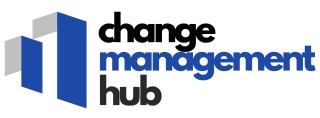
Understanding the Impact of Vacancies
Recognizing the Ripple Effect of Open Roles
In any organization, a vacant position can create a ripple effect, impacting not only the immediate team but also the broader company dynamics. When an employee leaves, it is not just the day-to-day tasks of that role that are affected. The absence can disrupt workflows, delay ongoing projects, and add extra burdens on current employees who may need to take on additional responsibilities, all of which can affect morale and productivity. The timing of backfilling a position is critical. Prolonged vacancies can lead to a gradual erosion of team performance and may impact the company's ability to meet its strategic objectives. Therefore, having a robust backfill strategy is essential for maintaining continuity and minimizing disruptions. Moreover, open roles can lead to unmet deliverables, causing potential dissatisfaction among clients and stakeholders. Recognizing these impacts early in the vacancy process allows organizations to implement strategic approaches to mitigate risks and maintain a stable environment. It is imperative to maintain open communication with team members during this time, ensuring they are informed about the efforts in place to fill the vacancy, as well as any changes in team dynamics. This aligns closely with managing team expectations and morale effectively.Strategic Approaches to Backfilling
Developing an Effective Backfill Strategy
Navigating the complexities of filling a vacant position requires a well-thought-out backfill strategy. Backfilling roles can present numerous challenges, but employing strategic approaches enables organizations to mitigate disruptions and maintain productivity. First, it's essential to create a robust process that aligns with both short-term and long-term needs. Assess the skills necessary for the role and determine if a current employee is suited to the job. Leveraging internal talent through cross-training allows for a more seamless transition and reduces the time spent on external hiring processes. Moreover, internal movement can boost morale as team members see paths for advancement within the organization. Consider crafting a detailed job description for the backfill position that clearly outlines the responsibilities, requirements, and expectations. This helps streamline the hiring process by attracting top talent with the skills required to thrive. Collaboration between hiring managers and team leaders plays a crucial role in shaping this description accurately. In addition to assessing current employees, fostering relationships with external candidates can expedite adjustments when employee leaves occur. A proactive approach involves keeping a pipeline of qualified potential hires who are engaged and ready to fill the needs of your business if the opportunity arises. Lastly, don't overlook the importance of mentoring new team members as they integrate into their roles. Building a mentorship culture can strengthen your organization's backfill efforts significantly. For further insight on this transformative aspect, refer to a detailed perspective on why mentoring is the cornerstone of successful change management. By adopting these strategic approaches, organizations can more effectively address the challenges of filling vacant roles, ensuring that they are well-positioned to meet their goals.Balancing Speed and Quality in Hiring
Prioritizing a Balanced Hiring Approach
When navigating the backfill process, it’s crucial to balance speed with the quality of new hires. A vacant position can put excess strain on current employees and disrupt the organization’s workflow, but hastily filling a role might not always yield the best results in the long term. Hiring managers must evaluate the pressing needs of the business while ensuring that new candidates align with the company’s culture and possess the necessary skills.
Implementing a Streamlined Recruitment Process
The hiring process for backfilling positions should be both efficient and thorough. By developing a structured approach, organizations can reduce the time required to fill a vacant position. Key strategies such as utilizing a clear job description, evaluating the skills necessary for the role, and leveraging a network of talent can streamline the process of backfilling roles. Furthermore, strategic use of technology can enhance the recruitment process, allowing companies to access a wider pool of top talent quickly.
Tapping into Internal Resources
Utilizing internal resources for backfilling can be a strategic move for organizations. Not only does it bolster employee morale by presenting growth opportunities, but it also expedites the transition by considering team members already familiar with company operations. Engaging in cross training can empower current employees to temporarily assume new responsibilities, easing the pressure of vacant roles and maintaining business continuity.
For organizations seeking to optimize their backfill strategy, balancing the urgency of hiring with maintaining quality is essential. Striving for this balance fosters a robust hiring framework that supports both short-term and long-term organizational goals.
Training and Onboarding for Success
Seamless Transition Planning for New Employees
When it comes to filling vacant roles, companies often focus on the recruitment aspect, but the post-hiring process—training and onboarding—is equally crucial. A robust plan not only ensures that new hires transition smoothly into their roles but also supports the overall effectiveness of the backfilling strategy. A successful training and onboarding process should consider the specific requirements of the position and align with the company's long-term objectives. By providing comprehensive training, organizations can help new employees grasp their responsibilities swiftly, reducing the time it takes for them to become fully productive team members. Implementing cross training can be particularly beneficial. It involves existing team members sharing their knowledge and skills with newcomers, thus fostering a collaborative environment and enhancing the agility of the team. Moreover, involving current employees in training can boost their morale and help in retaining top talent. Additionally, setting clear, achievable goals for the new hire's initial months can guide their progress and allow hiring managers to gauge the success of the onboarding process. Remember, an effective onboarding process not only fills the vacant position but also integrates the new team member into the organization's culture, ultimately benefiting the business in both the short term and long term.Managing Team Expectations and Morale
Acknowledging Team Dynamics and Concerns
In any organization, when there's a vacant position, it inevitably impacts the team's morale and dynamics. It is crucial to ensure that during this backfilling process, the concerns and expectations of current employees are acknowledged and addressed. Communication is key. Keeping team members informed about the ongoing plans and timelines can help minimize anxiety about additional workload or changes.Encouraging Open Communication
Inviting input from team members about the backfilling strategy for the vacant position can substantially aid in maintaining morale. Employees can offer insights into how the role has traditionally been executed and what skills the team might need. This input can prove invaluable during the hiring process, particularly when crafting a comprehensive job description for the backfilled role.Providing Support and Resources
To navigate these transitions smoothly, it’s important to provide the resources employees need to thrive. This might involve cross-training employees to fill immediate gaps or rearranging workloads in the short term while the hiring process is ongoing. By doing so, the organization demonstrates its commitment to supporting its team until a suitable backfill candidate is integrated.Recognizing Contributions and Efforts
Acknowledging the extra efforts made by team members during the transition period is vital. Recognition could take the form of verbal appreciation, formal acknowledgments, or small incentives, which all go a long way in fostering a positive atmosphere. It reassures the team that their efforts during this critical time are valued by the company.Planning for Future Vacancies
The experiences and insights gained during the backfilling roles can serve as a foundation for creating better strategies in the future. Establishing clear guidelines and best practices for managing vacant roles helps ensure quicker and smoother transitions going forward. A proactive approach can prevent disruption when an employee leaves, safeguarding both business continuity and team morale in the long term.Evaluating the Success of Backfilling Efforts
Assessing the Impact and Effectiveness of Backfilling Efforts
Evaluating the success of backfilling roles within an organization involves more than simply refilling vacant positions. It requires a comprehensive assessment of multiple factors related to the backfill process.- Role Fulfillment and Adaptation: The first measure of success is determining whether the backfilled position is meeting its intended functions. Does the employee fill the job description effectively, and have they adapted quickly to the role? The effectiveness of a backfill strategy can be observed through the smooth transition of responsibilities.
- Team Integration: How well has the new hire integrated within the team? This goes beyond skills to include how well they interact with team members and align with company culture. Team dynamics play a crucial role in overall productivity and morale, which influence long-term success.
- Employee Retention: Another indicator of backfilling success is retention rates. Are the new employees staying with the company, or are they leaving shortly after joining? A solid retention rate suggests that the hiring process, including how positions are backfilled, aligns with employee expectations and organizational needs.
- Performance Metrics: Performance should be monitored over time to determine if the new employee is achieving the set business goals. This includes comparing performance data pre- and post-backfill to ensure that the transition maintains or improves productivity.
- Feedback and Improvement: Gathering feedback from hiring managers and team members regarding the backfill strategy and process can help identify best practices and areas for improvement. Continuous evaluation allows the organization to refine their approach to better fill future role gaps.













